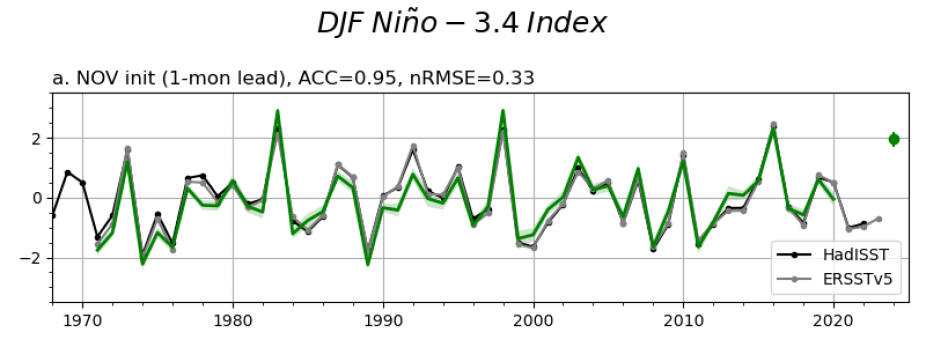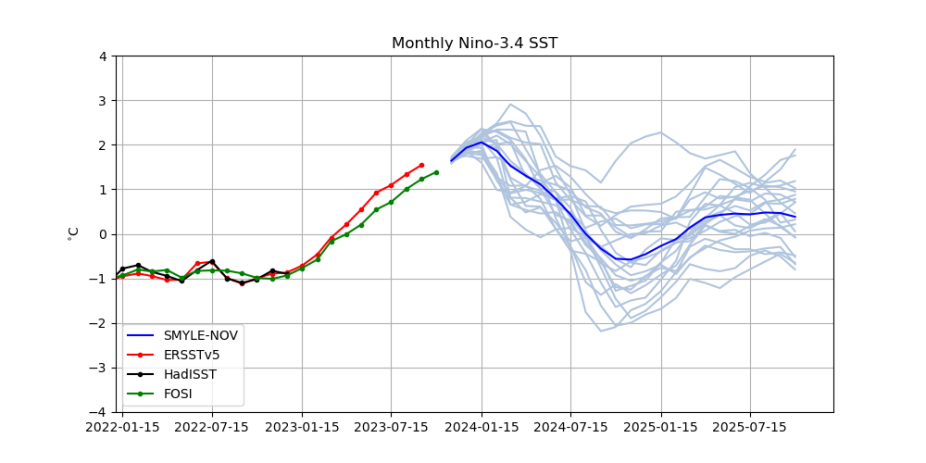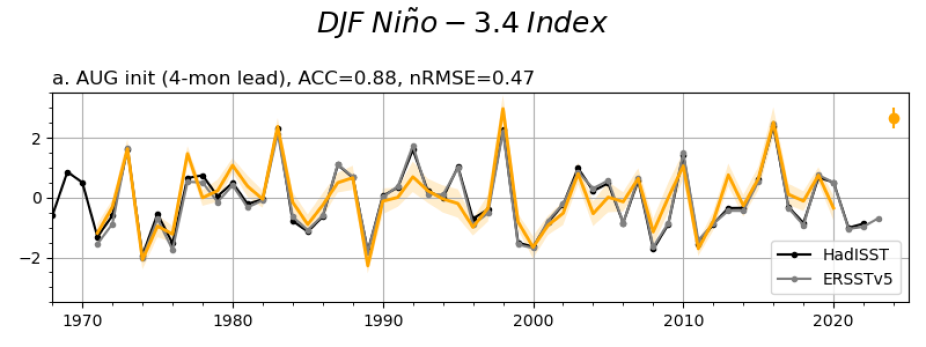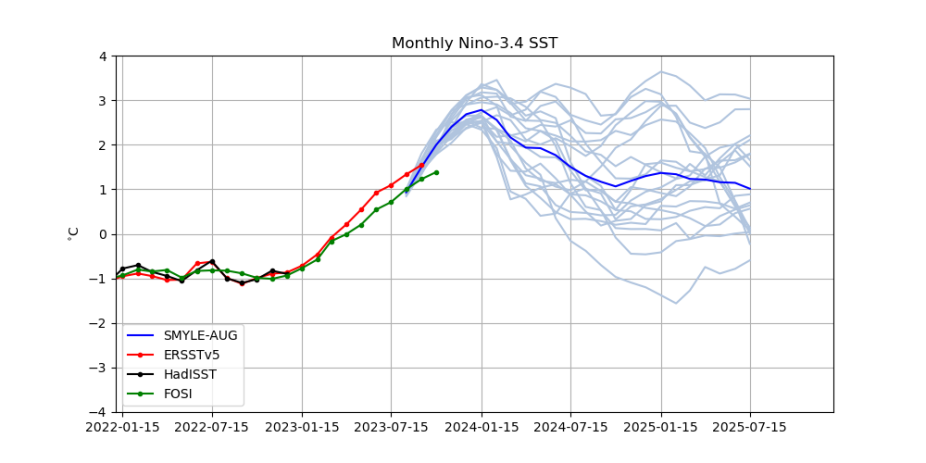Real-time SMYLE forecasts
The CESM2 SMYLE prediction system documented in Yeager et al. (2022) includes a set of 20-member hindcasts initialized on the 1st of February, May, August, and November from 1970-2019. New ensemble forecasts for the upcoming boreal winter (DJF) Niño3.4 are shown in the plots below, together with hindcast skill information.
Forecast from November 1, 2023
|
|
|
Left panel: Seasonal Niño3.4 anomalies for DJF, relative to 1982-2016 climatology, from observations (HadISST; black curve), SMYLE hindcasts (green curve, with shading showing ensemble standard deviation), and the SMYLE forecast for DJF of 2023/24 (green circle). The initialization date is November 1 and the hindcast/forecast lead time is 1 month.
Right panel: Monthly Nino3.4 anomaly plumes for individual SMYLE ensemble members (light blue) and the ensemble mean (dark blue) for the forecast initialized on November 1. The forecast goes for two years beyond the initialization date, and anomalies are relative to the 1982-2016 climatology. The ERSSTv5 observations (red) and HadISST observations (black) are also shown. The ocean run, FOSI, used to initialize the ocean component in the SMYLE forecast is also shown (green).
Forecast from August 1, 2023
|
|
|
Left panel: Seasonal Niño3.4 anomalies for DJF, relative to 1982-2016 climatology, from observations (HadISST; black curve), SMYLE hindcasts (orange curve, with shading showing ensemble standard deviation), and the SMYLE forecast for DJF of 2023/24 (orange circle). The initialization date is August 1 and the hindcast/forecast lead time is 4 months.
Right panel: Monthly Nino3.4 anomaly plumes for individual SMYLE ensemble members (light blue) and the ensemble mean (dark blue) for the forecast initialized on August 1. The forecast goes for two years beyond the initialization date, and anomalies are relative to the 1982-2016 climatology. The ERSSTv5 observations (red) and HadISST observations (black) are also shown. The ocean run, FOSI, used to initialize the ocean component in the SMYLE forecast is also shown (green).



